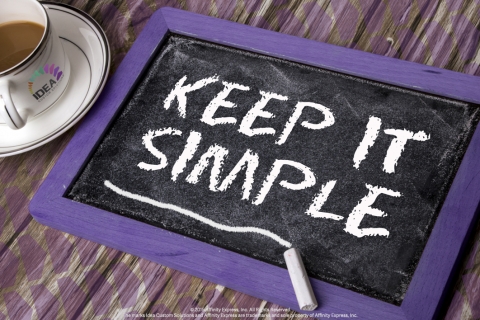Running a business is no easy task. On any given day, you’ve got a hundred things to manage. And yet, in order to keep your business successful and growing, you always need to bring in new business, new sales and new orders.
For distributors of specialty advertising products, the opportunities are limitless. In 2015, there are a wide range of different products that appeal to all types of customers. Techy promo products like USB flash drives, phone chargers and logoed accessories have become popular trade show grabs, while classics like toys — from Frisbees and miniature balls to bobblehead dolls — have become items that professionals covet and collect.

On the other hand, customers such as larger businesses, non-profits and local colleges may be interested in very different products than the local shop with only three employees. It can be confusing at times to determine what to show your current and prospective customers. And, sometimes by trying to be thorough in our efforts, we overcomplicate things.
Weighing in on this subject last week, Inc. Magazine likened running a business to eating pizza. Sure, invoicing customers and running payroll probably is not as pleasurable as eating pizza, but there are some similarities when it comes to variety versus simplicity. The article’s author, Paul Jarvis, laid it out this way:
“I've tried pizza with loads of toppings, and it's tasty but much harder to eat. Toppings fall off and the crust gets soggy . . . I think I want 14 more toppings in theory but, in practice, I know that cheese, sauce, and dough is the perfect pizza for me.”
When you sit down with customers, both new ones and existing ones, selecting the right methods to help them advertise and market are essential. Input should come from both sides.
Some customers may be inspired by looking at the GEICOs of the world, with their multifaceted ad campaigns that include not only talking geckos, but also celebrities of the past, joking camels and over-sensitive cavemen. These companies really know how to push their brands, whether through print ads or a variety of branded promotional products. But what works for them may not work for SMBs. Thankfully, there are still many choices for small businesses interested in making a mark.
The Advertising Specialty Institute tells us in their most recent Impressions Study that just about every category of specialty advertising is a winner. One quarter of the U.S. population owns logoed drinkware, and half use it two to three times a week. Meanwhile, 56% use branded pens and other writing instruments. Calendars, bags and logoed outerwear are no less popular than desk toys and tech items.
With all of the variety you can offer a customer, it may be tempting to show them a little bit of everything. But as The Guardian points out in their take on simplicity in business, entrepreneurs must prevent getting customers flustered. Present options and talk about a few ways that your customers can take action to promote their businesses. But don’t present too many products and limitless options or you risk stifling your customers with “decision fatigue”.
When meeting customers face-to-face, engage them but keep it simple. Ask questions. Ask about who they want to reach. What kind of people they do they want to build name recognition with? Are they targeting local consumers or professionals in a business-to-business role? Are the customers more formal or casual in their approach? Do they want to show a sense of humor?
By getting your customers to talk up their own ideas and enthusiasm for advertising their businesses, they will buy into working with you. In addition, your customers will help you narrow down to the best selections of promotional products to show them and help you strategize promotional campaigns.

Add new comment